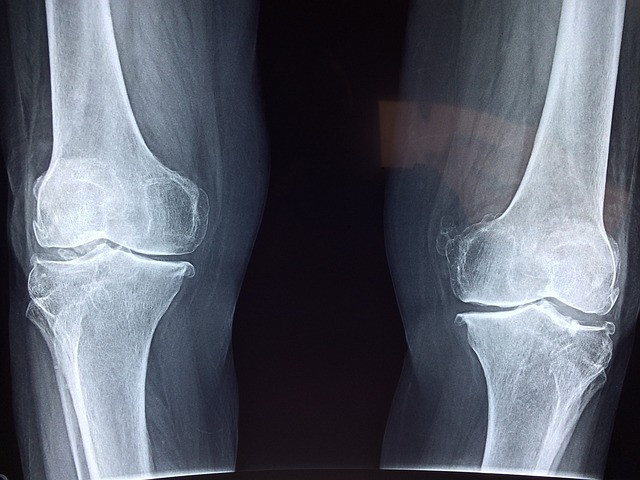
Table tennis, a fast-paced and exhilarating sport, demands agility, precision, and quick reflexes. However, like any sport, it also comes with its share of common injuries that players should be aware of. Coming from firsthand experience, playing with a long term injury can be painful and limit your potential. In this blog post, we will explore these typical injuries and provide valuable prevention strategies to keep table tennis enthusiasts in top from and injury-free.
Common Injuries in Table Tennis
Injuries are a part of any sport. They can happen at any time. It is important to be aware of what some of the common injuries in table tennis are. Although large amounts of ground aren’t covered when playing, table tennis is a very fast paced sport with lots of little movements. Between every shot there will be some sort of movement, getting into position, playing the shot then recovering. Sometimes we may even push ourselves beyond our capability by reaching/stretching for a shot that is going past us. Below are some examples of problematic areas that are common for injuries while playing table tennis.
sport with lots of little movements. Between every shot there will be some sort of movement, getting into position, playing the shot then recovering. Sometimes we may even push ourselves beyond our capability by reaching/stretching for a shot that is going past us. Below are some examples of problematic areas that are common for injuries while playing table tennis.
1. Elbow injuries:
Tennis Elbow (Lateral Epicondylitis): A repetitive strain injury that affects the tendons in the elbow. It’s often caused by overuse of the forearm muscles.
Golfer’s Elbow (Medial Epicondylitis): This injury affects the inner part of the elbow and can result from repetitive gripping and twisting motions.
2. Shoulder Injuries:
Overhead movements in table tennis, such as serves and smashes, can lead to shoulder impingements, rotator cuff injuries, and general shoulder strain.
3. Wrist Strain:
Table tennis players are at risk of wrist injuries due to rapid wrist movements involved in generating spin and power.
4. Ankle Sprains:
Quick lateral movements can put strain on the ankles, leading to sprains or minor ligament injuries.
Rolling your ankle over a ball left on the floor can also cause injury.
5. Knee injuries:
Patellar tendinitis, frequent bending and squatting can cause inflammation of the patellar tendon, resulting in knee pain and limited flexibility
6. Back Injuries:
Prolonged play and awkward postures can result in back pain, particularly in the lower back area. Twisting, bending and quick changes in movement can lead to lower back strains and sprains.
7. Calf strain:
While playing you should always be on the balls of your feet. Prolonged periods of time doing this can put a lot of strain on your calves. Not to mention the sudden twists and turns you make when playing.
Prevention Strategies
Now we are aware of some common areas that are more likely to get injured playing table tennis, we need to know what methods we can take to reduce the chance of them happening. Below I have outlined some possible strategies to help minimise the risk of injury.
1. Warm-Up and Cool Down:
- Always start your practice session with a proper warm-up to increase blood flow to muscles. Include stretches to maintain flexibility.
- Use the effective warm up strategy of:

- Pulse raiser – e.g. jog around the hall
- Mobility movements – e.g. high knees, heel flicks
- Stretches – These should be dynamics stretches, e.g. leg swing
- Dynamic movements – e.g. sidestepping around agility course
- Skill rehearsal – e.g. Forehand to Forehand
- Cool down after your practice to gradually lower your heart rate and reduce muscle tension. (If coaching a group, this can include asking the group questions about the session to reinforce what they have learnt.)
2. Proper Technique:
- Focus on developing and using proper stroke techniques to avoid overexertion and strain.
- Seek professional coaching to refine your strokes and movements.
3. Equipment Check:
- Ensure that your bat and shoes are appropriate for your playing style and comfortable for your hands and feet.
- Invest in table tennis-specific shoes with good grip and cushioning.
4. Strength and Conditioning:
- Develop a strength and conditioning routine that focuses on the muscles you use in table tennis.
- Include exercises that enhance wrist, forearm, and shoulder strength and flexibility.
5. Balanced Play:
- Avoid over training. Balance your training and practice with adequate rest to prevent overuse injuries.
- Consider incorporating cross-training activities to diversify your exercise regimen.
6. Proper Footwear:
- Wear shoes with good arch support to protect your knees and ankles.
- Make sure they fit well and provide adequate cushioning. Make sure the laces are tied tightly!
7. Stretching and Mobility:
- Incorporate a regular stretching and mobility routine, especially for the shoulders, wrists, and lower back.
- Focus on exercises that promote range of motion and joint flexibility.
8. Listen to your body:
- Pay attention to any discomfort or pain during or after play. Address any issues promptly and consult a healthcare professional if needed.
Pre-Existing Injuries
Playing table tennis with pre-existing injuries can present unique challenges, but it’s not necessarily a barrier to enjoying the sport. It’s essential to listen to your body and take a cautious approach. For example, if you have a history of wrist pain, consider using a brace or taping for added support. Likewise, those with knee issues might benefit from proper footwear and knee braces. A thorough warm-up and stretching routine can help reduce the risk of aggravating preexisting conditions. Additionally, adapting your playing style to minimize strain on vulnerable areas and seeking guidance from a sports physiotherapist or medical professional can provide valuable insights into injury management and prevention. With the right precautions and modifications, table tennis can remain an enjoyable and accessible sport for individuals with preexisting injuries.
As someone who has a pre existing knee injury I find I have to play in a more upright position and use my arm a lot more in my shots rather than my legs. Although this is not the correct technique I have had to adapt my play style to suit my needs. This has allowed me to continue playing and enjoying the sport. I find that stretching and participating in light exercise daily has helped reduce the amount of knee pain I have while playing.
Conclusion
Table tennis is a sport that demands agility, skill, and finesse. By understanding common injuries and implementing effective prevention strategies, players can enjoy the sport to the fullest while minimizing the risk of injury. Prioritizing proper technique, equipment, and physical conditioning is essential in ensuring long-term enjoyment of this exciting sport.


Great article! I’ve definitely experienced some wrist pain in the past from playing too intensely. The tip about using a lighter racket is something I’ll try next time. Thanks for sharing this informative post! I’m new to table tennis and was a bit worried about potential injuries. These prevention tips are really helpful, especially about proper warm-up and cool-down. I’ll definitely be mindful of these as I practice!
Thank you for your comment. It is always great to hear about new players! If you are struggling with wrist pain while playing you could try not gripping your bat too hard. Keeping a relaxed grip may help going forwards. You can read more about how to grip your bat here.
Also, make sure to include stretching exercises tailored to your wrists while warming up and cooling down if these are a problematic area for you.
Hello Ebony,
Thank you for providing a comprehensive overview of the potential injuries table tennis players might encounter and offers practical prevention strategies. It is crucial for athletes to be aware of these risks and take proactive measures to stay injury-free.
I particularly appreciate the emphasis on proper warm-up and cool-down routines, as well as the importance of seeking professional coaching to refine technique. The inclusion of tips for players with pre-existing injuries is also valuable, highlighting that with the right approach, individuals can still enjoy the sport safely.
Thank you for your comment. As someone who plays with an injury, including a warm-up and cool down and highly important!